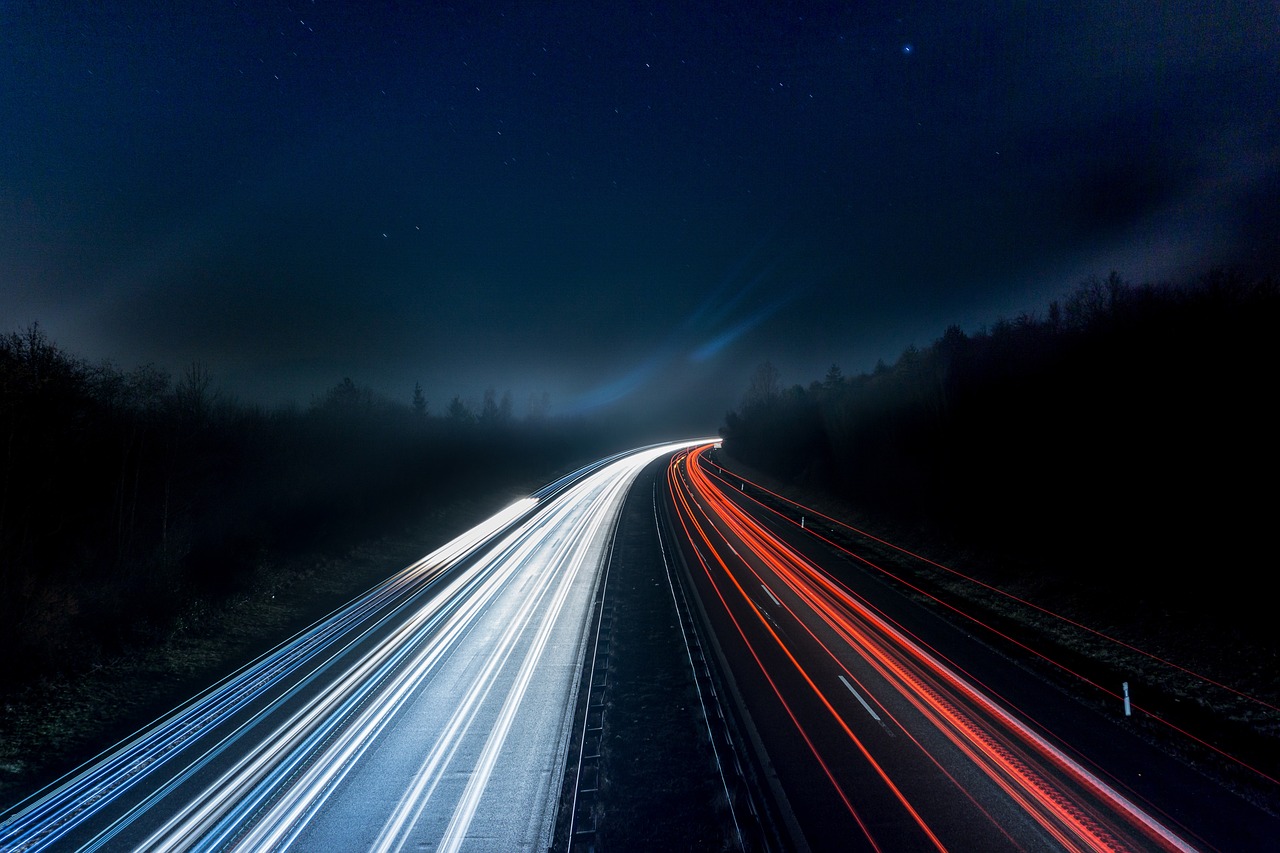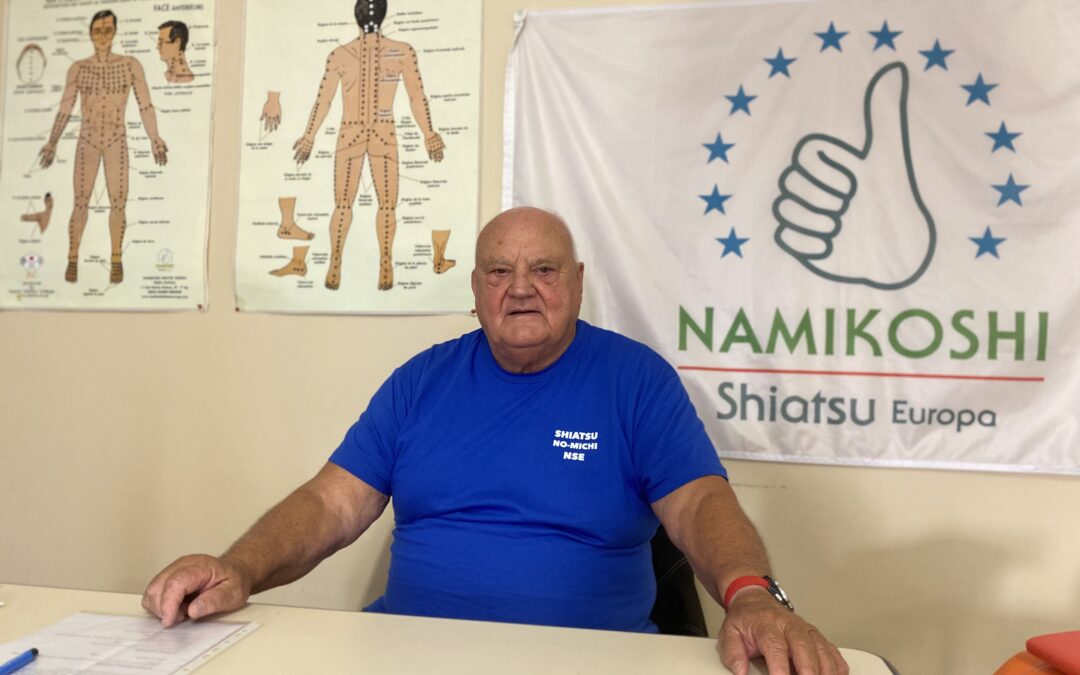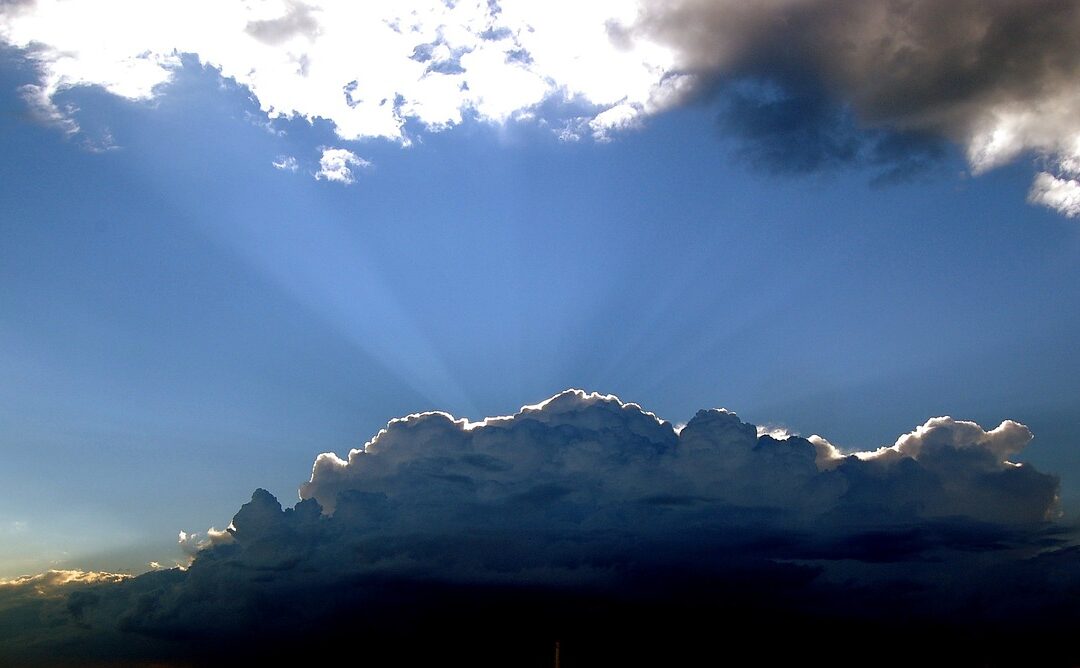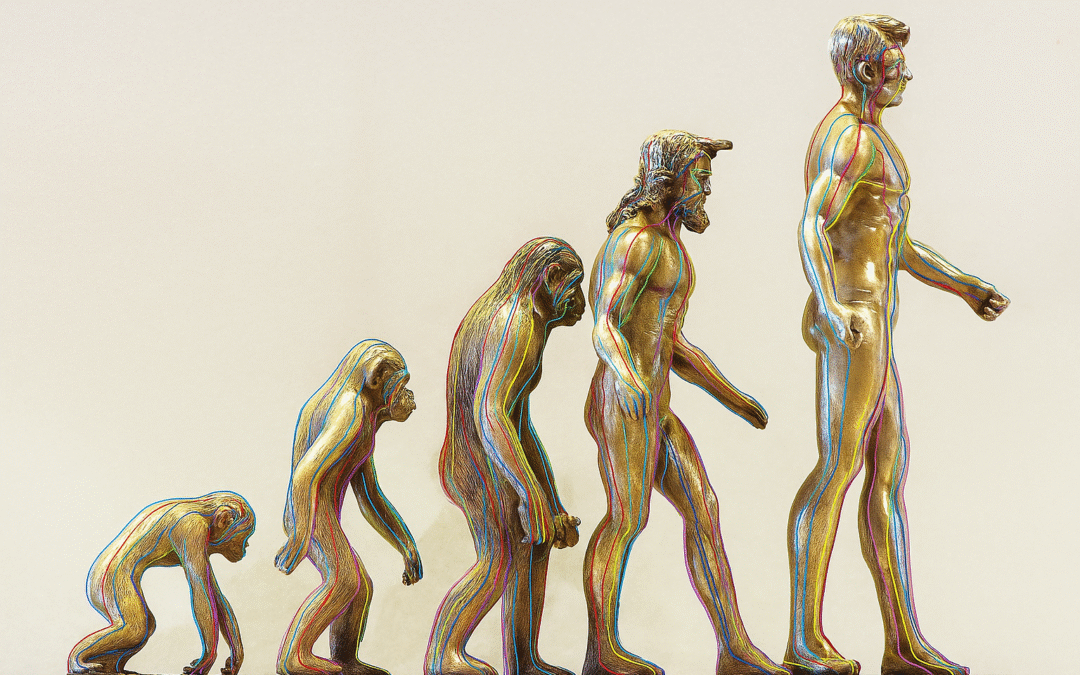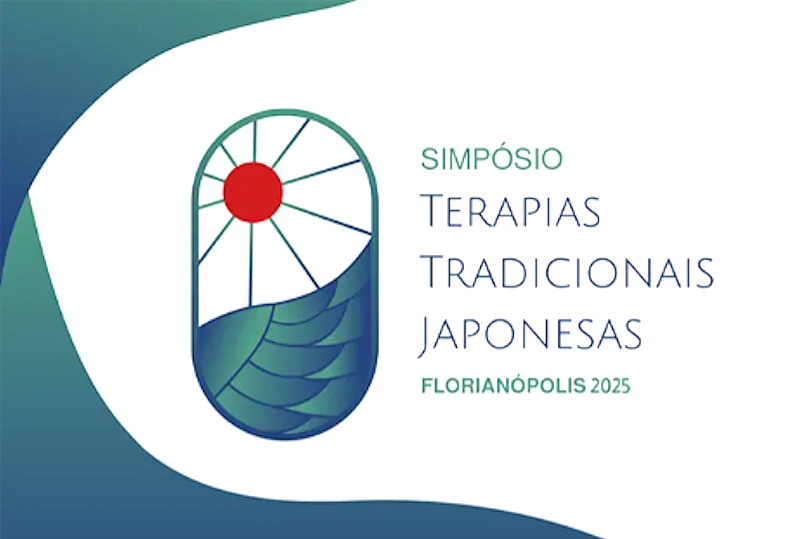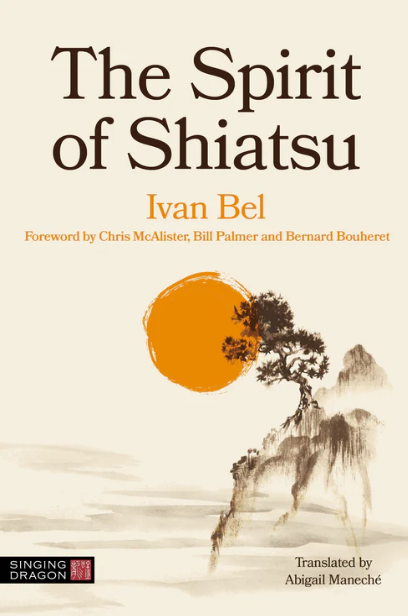The Bei Shu (or Yu in Japanese) points are well known to all students and practitioners of Shiatsu, as they are part of the basic baggage of their studies. But the Shu points on the back are just one part of the vast family of points known as “Assent” or “Transport” points. If we are usually taught the twelve Shu points corresponding to the twelve organs, there are in fact 27 points in all. Discover.
Before deciphering the meaning of the character, a little reminder: Traditionally in Oriental medicine the word shū xué (输穴) designates the points used to transport Qi, in other words all the points (‘holes’ to be exact). But as this name leads to confusion with the Bèi shū xué (背輸穴, Assent points of the back) and the Wǔ shū xué (五输穴, the five antique Shu points) and the other transport points we will see below, it is simpler to use another name to designate the acupuncture points, i.e. Xué wèi 穴位 (lit. ‘location of the holes’) in Chinese, and keiketsu 経穴 (lit. ‘passes/through the hole’) in Japanese.
A little etymology
In its ancient form, the character shū (输 simplified today into 俞) is made up of several parts.
Firstly, the key on the left is written 车 (chē) and pronounced [tcheu]. Its meaning is ‘vehicle or anything with wheels’ but by extension it can also be a boat.
On the right-hand side:
- At the top is the character for Man 人 (ren), then the number 1 一 (yī) which together form the character 亼 (jí) whose meaning is ‘to assemble, gather, unite’. For his part, Philippe Laurent in his book ‘L’esprit des points’ speaks of an assembly of planks, which brings us back to the idea of the boat.
- Bottom-right was 舟川 (with only 2 strokes to the right, but this no longer exists), the old spelling of the boat 舟 and the river 川, which went well together. But these two characters were changed to the key of flesh 月 (graphically close but semantically different) and that of knife 刀.
As a result, we have a rather surprising semantic shift. The old version of shū clearly meant ‘a boat of assembled planks that sails on water’. But as this wasn’t clear enough, Chinese calligraphers altered several parts of the character to change its meaning. The whole 刖 (yuè) means – hold on tight! – ‘to cut off the feet as a punishment’. Word for word, it could therefore be translated as ‘to lead/vehicle an assembly of people to (attend, decide, judge, endure?) the punishment that consists of cutting off the feet’. It’s a good thing we don’t do etymology of characters in class, otherwise everyone would run away. But Philippe Laurent points out that the annotation indicates that the knife sign is used to say that the boat splits the water, and then in the latest version it splits the flesh to go directly to its destination. In other words, a shū point allows you not to follow a meridian but to cut straight through the flesh to reach an organ or anatomical area. It’s already less creepy and, above all, more meaningful.

The word 输 (shū) in its entirety with all its parts therefore has two very different but logical meanings: ‘to lose’ (something; in gambling) or ‘to transport’, but also in much more modern versions ‘to miss, not to arrive at and to enter a password’. In Chinese medicine, we only use the word ‘transport’ to explain the function of these points. Today, the character has been simplified like this 俞, removing the key for transport. However, it still retains this meaning, which is why it’s so useful to know classical Chinese.
So why do we translate the word 俞 as ‘Assent’?
The reason is as follows: this same character is also pronounced Yú, which means ‘yes, all right’. This way of expressing oneself was traditionally reserved for the emperor or the great lords of imperial China, and this is why translators, not knowing which word to use, kept both meanings of ‘Assent AND Transport’.
Roles of the Shu points
As we have just seen, all the points ending in the word shū 俞 have a function of transporting energy. If they transport energy, this means that they have a destination and therefore privileged access to it since they pass through the flesh. This is particularly clear for the “Shu” points on the back, which are directly linked to the organs without going through the entire meridian circuit. This makes it possible to take a shortcut, to communicate directly with an organ and send it the energy of the Bladder meridian, the strongest of all the Yangs (Tai Yang) to replenish an organ. But it can also work the other way round, transporting energy from an organ to the point, particularly when it is empty, to replenish it.
An old text by Giovanni Maciocia, a specialist in Chinese medicine, explains these points on the Bladder meridian as follows: “The Kidney stores the original Qi and also collects energy from the Earth. The Source points bring back the original Qi in the meridians. But it is the Yu/Bei Shu points that transport the energy between the Kidney and the Source points“. As the Bladder is intimately linked to the Kidney, it is this meridian who is responsible for distributing Qi throughout the body, which explains why a small organ like the Bladder is the longest, most diverse and most active of the meridians.
Acupuncture atlases state that these are mainly drainage points, which help to calm the organ, and that they are particularly used in chronic pathologies. In any case, this principle is valid for all Shu points in general, whatever their location, as we shall see below. Their role is always the same: to transport Qi.
Review of the Shu points
- Bladder: UB 13, UB 14, UB 15, UB 16, UB 17, UB 18, UB 19, UB 20, UB 21, UB 22, UB 23, UB 24, UB 25, UB 26, UB 27, UB 28, UB 29, UB 30, UB 43
- Small intestine: SI 10, SI 14, SI 15
- Kidney: K 16, K 27
- Governing vessel: GV 2
- Extraordinary points: Ex-B 3 Wei guan xia yu
The twelve Bei Shu of the back
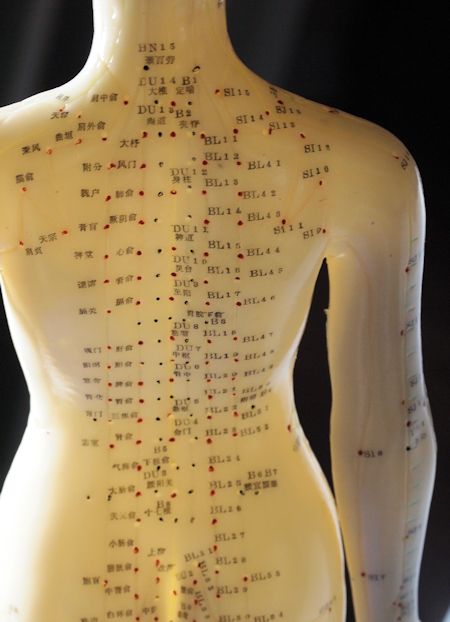
Let’s start with the best known, the 背俞 (bèishū). There are 12 of them, at least in the basic explanation, but on the first line of the Bladder meridian there are in fact up to 18. These points are linked not only to organs, but also to anatomical areas (muscles, bones) or to the Extraordinary Vessels and energy (Qi) itself. Let’s look at them all, because it’s a good way of learning the Chinese names for the organs.
1. UB13 (肺俞 Fèi shū):
Lung assent: at D3 (or T3 if we’re talking thoracic rather than dorsal. Same for all the following points).
- Main point for all problems related to the Lungs – tonifies the Qi and Yin of the Lung in cases of cough, asthma, bronchitis, sore throat, nasal congestion, shortness of breath, weak voice, emancipation, ‘vapour bone’ disorder, etc.
- Useful for skin disorders, itching, acne, hives, etc.
- Emotional imbalances linked to the lung, such as grief and sadness.
- The toning aspects of Qi can be increased by applying moxibustion to this point.
2. UB14 (厥阴俞 Juéyīn shū):
Often mistranslated as Assent of the Master of the Heart (which is spelt 心包 Xīn bāo ‘envelope of the heart’), but here the word speaks more of the Jueyin meridian, which is, in the 6 layers, the combination of Master of the Heart AND the Liver.
But as the Liver is included below, the translators have taken the view that it refers to the Master of the Heart. By the way, for those who translate this name as pericardium, be aware that we would then say Xīn mó (心膜). Located at D4.
- For all heart problems: palpitations, anxiety, stress, etc. To be combined with PC6 to open the chest (as in a globus syndrome). This chest pain may be psycho-emotional (i.e. linked to the Liver/Heart system) or it may be due to simple congestion (cough, rebellious Qi, shortness of breath, etc.).
- Harmonises the Liver – as a ‘Jueyin Shu’, you can also treat conditions linked to the Liver such as Liver Qi stagnation – depression, anxiety, panic attacks, etc.
3. UB15 (心俞 Xīn shū):
Assent of the Heart: at D5
- Main point for all problems linked to the Heart, problems linked to the Blood and circulation, of an excessive or deficient nature.
- Nourishes the mind and calms the Shen – main point for all emotional problems linked to the Heart: palpitations, anxiety, easy to fear (H/K), stress, poor memory. Useful with PC6, H7, CV14 and/or UB14.
- Particularly important for insomnia.
- Night-time sweating in cases of deficiency of the Qi and/or Yin of the Heart.
4. UB16 (督俞 Dū shū):
Here Du refers to Du Mai, so it’s the Assent of the Governing Vessel, at D6.
- Hot and/or toxic skin conditions (especially on the back): acne, boils, psoriasis, alopecia.
- Harmonises the Qi in the chest and abdomen – epigastric pain, abdominal distension, borborygma.
- Chest/heart pain – releases the chest.
5. UB17 (膈俞 Gé shū):
Assent of the diaphragm at D7.
- For menstrual problems, due to deficiency (sparse, light periods, amenorrhoea) or stasis (dark clots, dysmenorrhoea).
- Important point for red, itchy skin due to the heat in the Blood, such as eczema.
- As the ‘Shu of the Diaphragm’, it harmonises the chest and brings down rebellious Qi – problems with diaphragmatic breathing or shortness of breath and other conditions linked to the diaphragm such as burping or hiatal hernia.
- Chest/cardiac pain, as well as psychological disorders linked to the “heart” – manic depression.
- Various digestive problems, particularly those involving rebellious Qi – vomiting, epigastric pain, reflux.
6. UB18 (肝俞 Gān shū):
Assent of the Liver, at D9. Please note that there is no point at D8.
- Main point for all conditions linked to the Liver – physical and psycho-emotional.
- Physical problems of the Liver such as – hepatitis, jaundice, cirrhosis. Generalised stagnation of Blood, stagnation of Qi, etc.
- Brightens the eyes – important for eye problems, pain, itching, dryness, redness, blurred vision, visual dizziness, tics, night blindness (difficulty seeing in dim light).
- Expands Liver Qi and stabilises the Spirit – important for emotional problems linked to the Liver such as anger, depression, irritability, frustration, stress and/or PMS.
- Useful for hypochondrial and/or subcostal pain.
7. UB19 (胆俞 Dǎn shū):
Assent of the Gallbladder, at D10.
- Shaoyang level illnesses, alternating fever and chills. Dissipates heat and dampness.
- Main point for damp heat in the Liver and Gallbladder: hepatitis, cholecystitis, jaundice, vomiting, pain and distension in the flanks, bitter taste in the mouth. Often combined with Liver Shu to activate the bile.
- UB17 & UB19 are classically known as the ‘Four Flowers’, useful for tonifying the Blood.
- Pain along the GB meridian (sides of the body) whatever the cause, intercostal neuralgia, rib pain, trauma, herpes zoster.
- Emotional problems linked to the gall bladder: indecision, shyness, fear. Psycho-emotional problems linked to humidity and heat, such as insomnia, anxiety (often accompanied by a bitter taste in the mouth) and palpitations.
8. UB20 (脾俞 Pí shū):
Assent of the Spleen, at D11.
- Main point for all problems of the Spleen-Pancreas (SP), both for the physical functions of the organs and for energetic/psychological interactions.
- Physical problems of the Spleen – distension, abdominal pain, bloating, lack of appetite, as well as more complex conditions – dysentery, malaria.
- Blood-related problems – heavy menstrual bleeding, uterine bleeding, blood in stools and/or urine.
- Commonly used for SP Qi deficiency: fatigue (spreading to limbs/heaviness), lack of appetite, abdominal bloating and/or distension, undigested food in stools, chronic diarrhoea and/or belching.
- Eliminates dampness.
9. UB21 (胃俞 Wèi shū):
Assent of the Stomach, at D12.
- Main point for all problems related to the Stomach – harmonises the Stomach, transforms moisture and dissolves Stasis, food stagnation, abdominal distension, borborygma, mouth ulcers, vomiting, belching, nausea, etc.
- Lowers rebellious Qi in the stomach.
- Dissolves accumulations and lumps in the abdomen, combined with Pigen (extraordinary point on the back for lumps, tumours, 3.5 cun lateral to the lower edge of L1). Because of the same functions of resolving Qi stagnation, it can also be useful for pain in the chest, the Stomach/Spleen area and the lateral costal margin area.
- As the point also regulates the upward movement of Qi, it is used for rectal prolapse and, in conjunction with other points, for hiatal hernia.
10. UB22 (三焦俞 Sānjiāo shū):
Assent of the Triple Burner.
It should be noted in passing that Jiao does not mean ‘warmer or hearth’, but has the meaning of ‘burnt, scorched, worried, anxious’. Located at L1.
- As the Shu of the TB, this point acts on conditions linked to imbalances between the upper and lower parts of the body, particularly those linked to water: oedema, bloating, ascites, borborygma, difficult or painful urination, urinary retention.
- Thanks to its ability to displace accumulations of water, it is also useful for certain problems linked to Dampness in the head, such as headaches and visual dizziness.
- Used in cases of alternating chills and fever, jaundice and other problems involving difficulty in digesting food.
- Strengthens the Spleen.
11. UB23 (肾俞 Shèn shū):
Assent of the Kidney, at L2.
- For all problems related to the renal system that affect the brain, bones, hair, teeth and/or hearing.
- Sexual problems linked to male deficiency: impotence, premature ejaculation, spermatorrhoea, sterility, exhaustion after ejaculation.
- Female sexual and reproductive problems: irregular cycles, dysmenorrhoea, amenorrhoea, cold uterus, frigidity, infertility, leucorrhoea.
- Toning point for states of deficiency: exhaustion, weakness, chronic fatigue, a good point for the elderly, as the Kidney Jing is naturally depleted.
- Main point for acute or chronic back pain, sprains and/or strains.
- Useful for kidney-related ear problems: low-pitched tinnitus (as opposed to high-pitched tinnitus, which is Liver-related), deafness, chronic ear infections.
- Useful for Humidity and water metabolism problems – oedema, fluid retention in the lower abdomen.
- As the renal system provides the root of the Qi, many psychological conditions will respond well to toning up this point – depression, anxiety disorders.
12. UB24 (气海俞 Qì hǎi shū)
Assent of the Sea of Energy: in reference to CV6 located opposite on the belly, level with L3.
- Generally used as a local point for back pain. General weakness in the lower back and/or knees.
- Due to the functions of moving Qi in the area, can be used in cases of haemorrhoids, dysmenorrhoea and other discharges such as leucorrhoea, bloody stools, etc.
- Regulates the Kidneys and increases Qi.
- Calms pain and regulates menstruation.
13. UB25 (大腸俞 Dà cháng shū):
Assent of the large intestine, at L4.
- Main point for lower back pain, especially when linked to constipation and/or menstruation.
- Main point for all intestinal problems: constipation, diarrhoea, dysentery, colitis, IBS (Irritable Bowel Syndrome), etc.
- Regulates function in the colon so that potential uses for poor assimilation, limited weight gain despite eating lots of calories.
- Harmonises the LI and relaxes tendons.
14. UB26 (关元俞 Guān yuán shū):
Assent of the Original Gate in reference to CV4, just opposite on the abdomen, often translated as Assent of the Uterus and Lumbar region to describe the functions of the point. Located at L5.
- Local point to clear the meridian – lower back pain, both as a local point and because of the invasion of the Wind (possibly with UB28).
- Dissipates Cold in the lower body – abdominal pain, intestinal problems, abdominal masses.
- May be useful for a range of urinary problems – frequency, night-time urination, difficult urination.
15. UB27 (小肠俞 Xiǎocháng shū):
Assent of the Small Intestine, located at S1.
- Main point for all problems related to the Small Intestine.
- Heat-Humidity affecting the Bladder (difficult or painful urination, haematuria, dark urine).
- Heat-Humidity affecting the intestines (diarrhoea, haemorrhoids, dysentery).
- Other disorders due to discharge of lower heat – leucorrhoea, seminal discharge.
16. UB28 (膀胱俞 Páng guāng shū):
Assent of the Urinary Bladder, at S2.
- Main point for all Bladder problems: Heat-Humidity (painful and/or dark urination), Cold (frequent urination, incontinence).
- For Heat-Humidity anywhere in the body, combine with SP9 to expel moisture through urination – diarrhoea, constipation, backache, infections and/or swelling in the lower burner.
17. UB29 (中膂俞 Zhōng lǚ shū):
Often translated as Assent of the sacrum. But the word Lu means either the spine or the force, which should give Assent of the middle of the spine, or Assent of the middle of the force. But in both cases, it doesn’t necessarily seem logical, so we refer to its effect.
Located at S3.
- Generally, a local point for back pain and/or stiffness, hernia.
- Warms the Yang of the Kidney – wasting and thirst, lack of perspiration.
- Harmonises the GI and strengthens the lumbar region.
18. UB30 (白环俞 Bái huán shū):
Often translated as Assent of the anus to refer to its effect, the words Bai huan mean White Ring. But as Assent of the White Ring doesn’t really speak to our imagination, we prefer to translate it by the anatomical area concerned. Located at S4.
- Local point for pain in the lower back, sacrum, coccyx and/or hip. Also used for hernias.
- Secondary point for gynaecological disorders linked to the Kidneys: menstrual problems, leucorrhoea, pelvic inflammatory disease, endometriosis.
- Supports the Kidneys.
Additional Shu points
There are nine additional Shu points, distributed throughout the body. They have the same functions as the Bèi shū, but in other areas of the body.
19. UB43 (膏肓俞 Gāo huāng shū):
Gao huang means ‘paste, ointment’ but also ‘area under the heart’. Without going into too much anatomical detail, this is a fatty region that surrounds the heart to protect it and act as a nutritional reserve. It’s obviously untranslatable, so we’ll either find ‘Assent of the area under the heart’ or ‘Assent of the area difficult to touch’, or ‘Assent of the vital region’, a translation preferred by the English.
Located at D4, 3 cun from the midline.
- Main point for all disorders of the lung and upper heater: asthma, dyspnoea, coughs, tuberculosis, etc.
- Toning point for cases of weakness and deficiency, particularly in cases of chronic illness.
20. SI10 (臑俞 Nāo shū):
Assent of the upper arm, located at the dorsal end of the axillary crease, against and below the spine of the scapula.
- Local point for pain, swelling and/or weakness of the shoulder and arm.
- Wind-Heat, Wind-Cold – chills and fever, eliminates inflammation.
- Reduces oedema, softens tendons.
21. SI14 (肩外俞 Jiān wài shū):
Assent of the outer part of the shoulder, level with D1, 3 cun distance from the midline in the back, aligned with the second line of the Bladder.
- Local point for pain in the shoulder and scapular region.
- Neck pain and/or rotation problems, and upper back pain.
- Softens tendons.
22. SI15 (肩中俞Jiān zhōng shū):
Assent of the middle part of the shoulder, level with C7 and 2 cun away.
- Disperses Lung Qi: asthma, coughing, expectoration of blood (haemoptysis).
- Local point for pain in the shoulder, neck and/or upper back.
23. K16 (肓俞 Huāng shū):
Translated in Franch as Assent of the corners of the entrails, the English version is more faithful to the Chinese with Assent of the vital tissues.
The character Huang means ‘region between the heart and the diaphragm’. But its position belies this, as the point is located 0,5cun on either side of the navel.
Intersecting point between the Kidney meridian and the Penetrating (or Deep) Vessel.
- Eases intestinal transit.
- Cold and/or dryness affecting the lower abdomen and/or intestines – constipation, abdominal pain.
24. K27 (俞府 Shū fǔ):
Assent of the Palace/County/Mansion, 2 cun from the abdominal central line, below the lower edge of the collarbone.
- Lowers rebellious Lung Qi and soothes pain.
- Opens and relaxes the chest – asthma, constricted breathing, coughing, chest tightness.
- Tonifies Kidney deficiency leading to exhaustion of the adrenal glands – tiredness, reduced immunity.
- Local point for neck and/or jaw problems – pain, tension.
25. GV2 (腰俞 Yāo shū):
Assent of the loins. The word Yao means ‘waist’. Located on the midline of the back, on the sacral hiatus, at the same level as UB33.
- Facilitates circulation in the meridian, soothes pain.
- Can be used instead of VG 1 for anal problems – prolapse, haemorrhoids.
- Warming point, for cold in the lower body, irregular menstruation, amenorrhoea or uterine bleeding due to deficiency, leucorrhoea, weakness or atrophy of the lower limbs, seminal emission, impotence, diarrhoea.
- Pain in the coccyx with difficulty in sitting or pain at the opposite end of the canal, posterior neck pain, occipital or frontal headache.
26. ExB3 (胃管下俞 Wèi guǎn xià yú):
Also called Yi Shu or Wei Wan Xia Shu, it is located below D8 at 1.5 cun from GV, on the highest visible point of the paraspinal muscles. The English translation is Lower Stomach Controller. You will recall that we said earlier that there is no point on the first line of the Urinary Bladder at D8. In fact, there is an extra point placed exactly on this line of the Urinary Bladder. It should be classified as a Bei Shu, but it is not. To understand it, we need to refer to the concept of Xuli, the Hollow Lane.
- Recommended for treating diabetes, vomiting, abdominal pain and gastric disorders.
- Chest pain, hypochondrial pain, intercostal neuralgia.
- Clarifies heat and helps to create liquids. Use in cases of thirst, dry throat, problems with thirst and urination.
Temporary conclusion
Finally, no matter where the Shū points are placed, what is important is their purpose. We understand that this is to cut as short as possible to an anatomical area or organ and transport the Qi from the organ to the meridian and vice versa. Given the power of the Urinary Bladder meridian, it’s hardly surprising that these points are so effective.
But there’s more to this family. There are still 60 points which, despite the fact that they do not have the word Shū in their names, are classified in this large, incredibly rich and complex group: the Wǔ shū xué (五输穴) better known as the ‘5 antique Shu’ which we will discuss in a future article.
References
- L’Esprit des points; Philippe Laurent, 2010, published by YouFeng
- The Clinical Use of the Back-Shu Points in Acupuncture; Giovanni Maciocia, on Giovannimaciocia.com
- Les points Shu du dos; Rolland san Salvadore on Taoetspiritualite.fr
- Précis d’acupuncture chinoise; Académie de médecine chinoise, 1999, published by Dangles.
Author
- 2nd Balkans Shiatsu Summit – in Zagreb (Croatia), April 11 & 12, 2026 - 21 November 2025
- An intensive week to explore Emotions and Psychological Disorders – 5-11 July 2026 - 7 November 2025
- Italy: Shiatsu Stage – Energy Principles and Vacuum Concept (Xuli) in Shiatsu – 31/01 and 1/02 2026 in Padua - 4 November 2025
- FAQs - 12 August 2025
- A Milestone: The 2025 ESF Symposium in Brussels - 24 March 2025
- Terésa Hadland interview: Shiatsu at core - 25 November 2024
